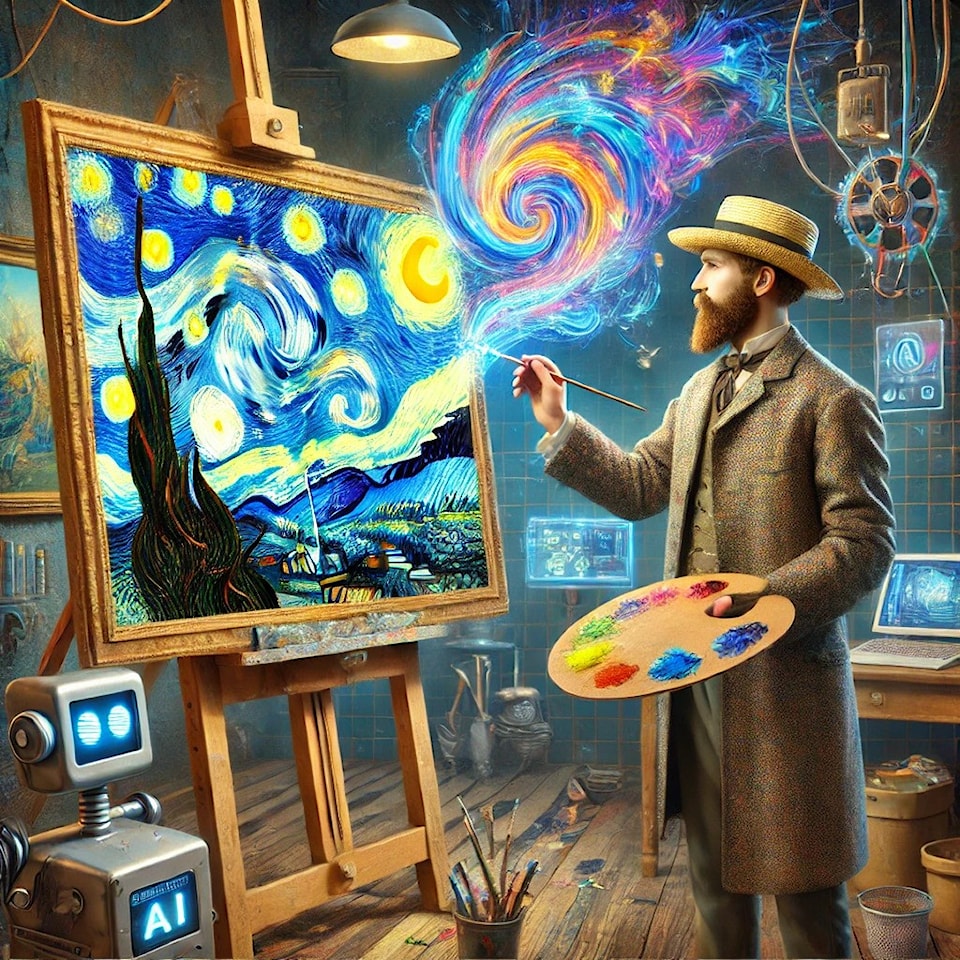When I was sitting in the back of my writing class last year, I saw almost everyone open up Chat GPT to work on an assignment.
I knew something was wrong.
Ever since generative Artificial Intelligence was released, almost everybody started using it in one way or another.
Essays, math questions, spreadsheets or instant artificial pictures highlight a growing problem, we're getting lazy.
After all, nobody would want to spend hours and hours painting a masterpiece when you could have anything you can imagine instantly by typing a few words and then clicking a button.
That goes for writing, too, when writing an essay, story, poem, report or anything else when Chat GPT could easily churn out something that might be better than what you could've made yourself.
The concerning rise of generative AI programs and tools brings important questions and moral implications to the table.
Obviously, Artificial Intelligence has its benefits as well. It can help streamline work, monitor patients in hospitals, and give qualified therapy to those who need it.
However, when technology is abused to the extent it seems to be, the human touch and the beauty of the soul are constrained and snuffed out by the overwhelming amount of mass-produced art.
Art is not a computer code that makes the most logical rendition of something based on a prompt. It’s something that is made from the soul of a human. Vincent Van Gogh poured his lifelong depression into his work, and Eminem used his extremely rough childhood as inspiration for his songs,
Artificial Intelligence cannot experience the pain and emotion put into art and the effect it could have on people is lost in translation.
Another issue is the erosion of originality. AI models like Chat GPT or DALLE-E don’t create new work. Whenever it “creates something,” it’s blending countless works of art created by real artists.
According to a recent study presented at the joint conference AI, Ethics, and Society, hosted by the Association for the Advancement of Artificial Intelligence and the Association for Computing Machinery, artists reported economic losses and reputational harm due to AI-generated works.
Tools like MidJourney and Stable Diffusion, trained on billions of images, often use artists’ works without consent.
This practice not only undermines artists' livelihoods but also leads to the proliferation of derivative, non-original art, potentially diluting the cultural richness of creative industries.
Then comes the question of ownership, who owns something AI generated? Can an artist sue for infringement? Does the company own the claim to all generated images? These are issues that we have yet to address and until we do the ethics of AI remain cloudy.
Maybe the most troubling prospect of how AI would impact the future would be the replacement of creativity with convenience.
For future generations, they will be flooded with generic AI slop from their education to their music.
What will happen to the joy of effort being paid off? it will be replaced by complacency.
the prospect of AI like this gives the risk that we will become a civilization that covets speed and ease over effort and accomplishment.
Of course, AI can be used as an effective tool in many situations however we have to think critically about it and not praise it as the best tool we have.
We have to consider if we are using AI to enhance our creative process or if we are fully replacing it.
At the end of the day, the messy, unpredictable and bewitchingly flawed process that is human creativity belongs to us and we should not lose it in the continuous race for optimization.




